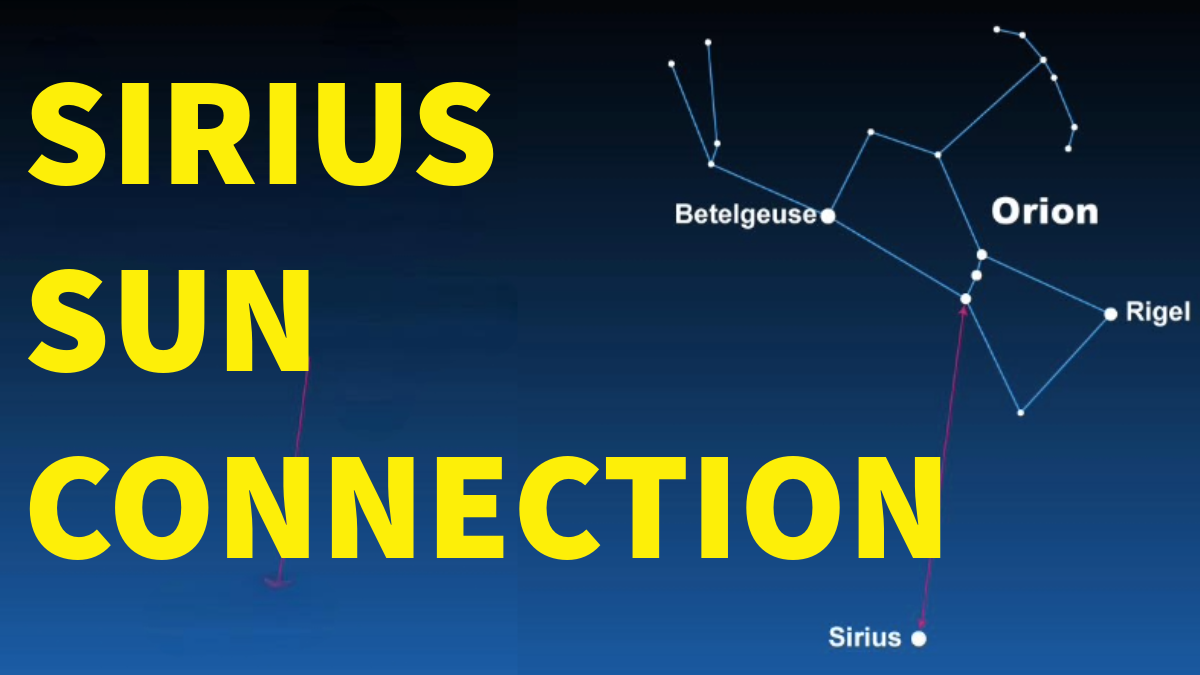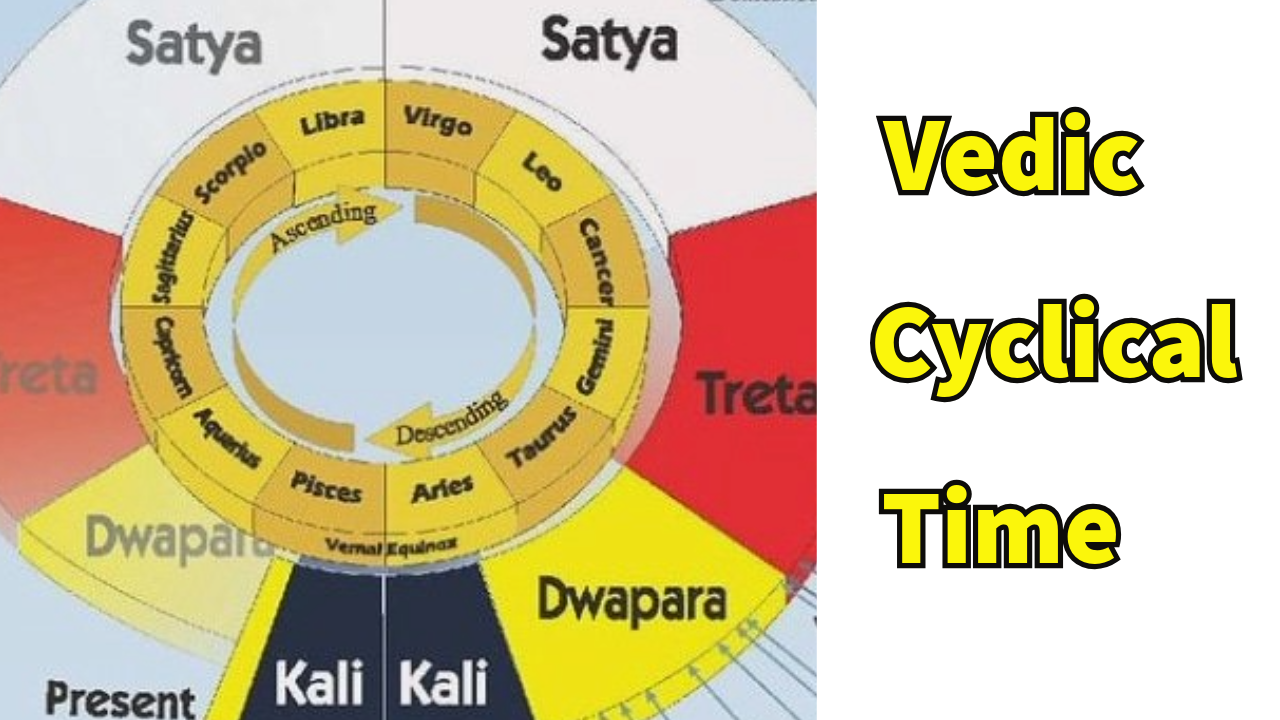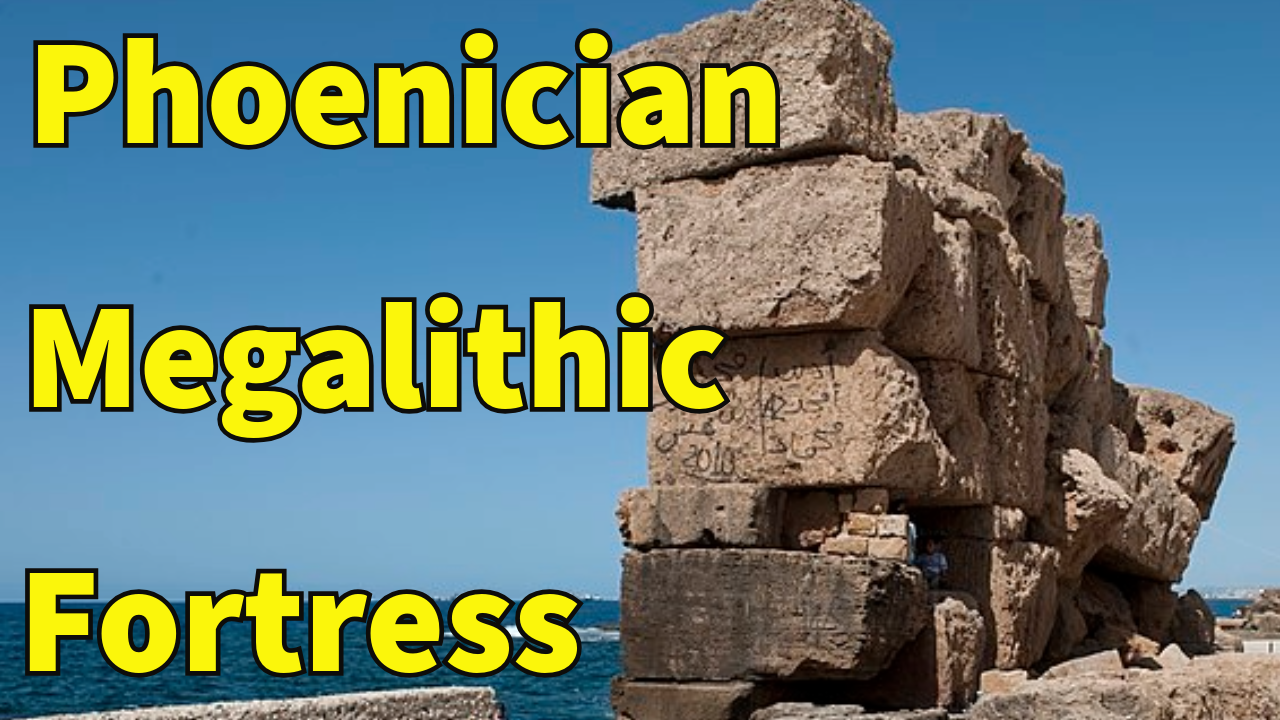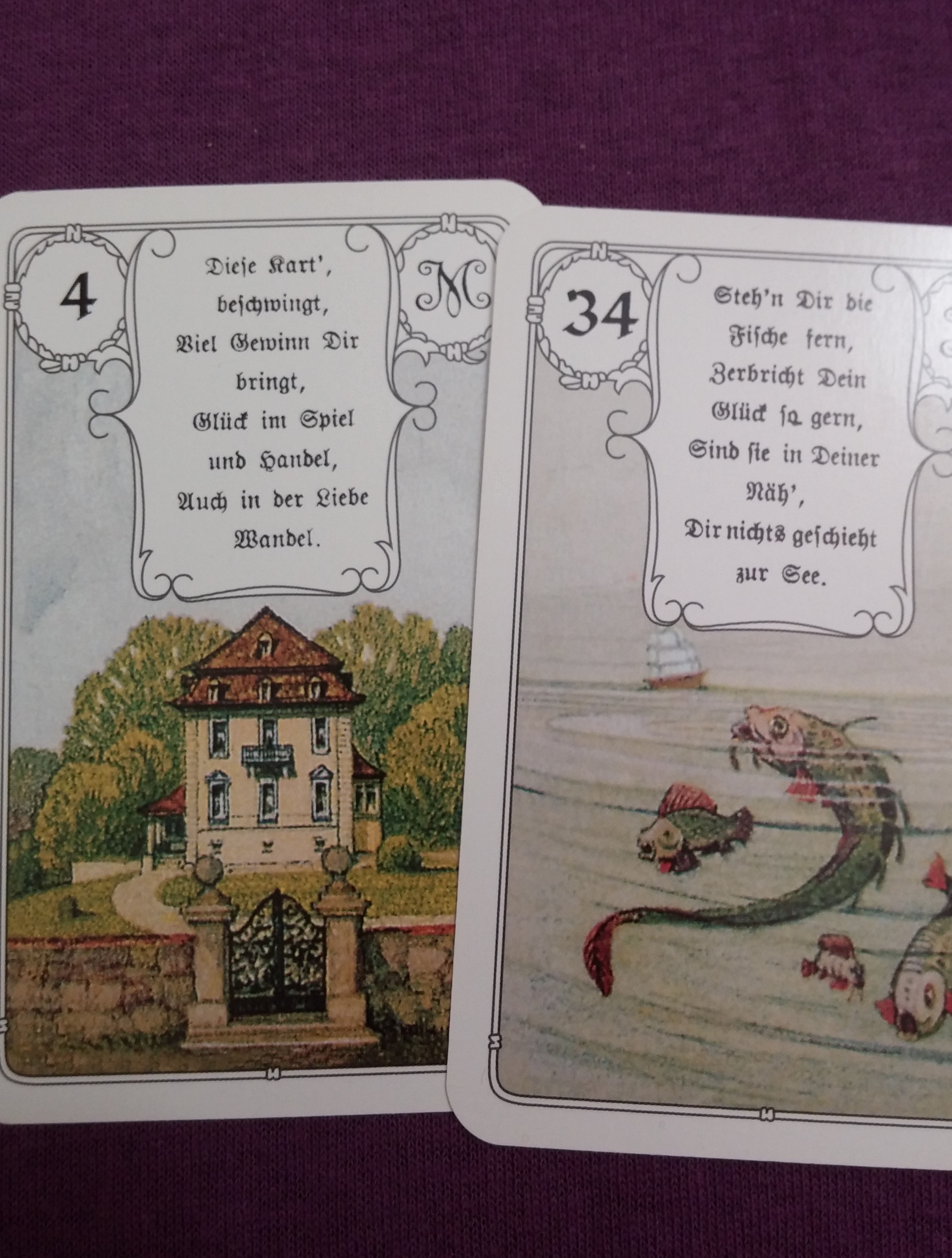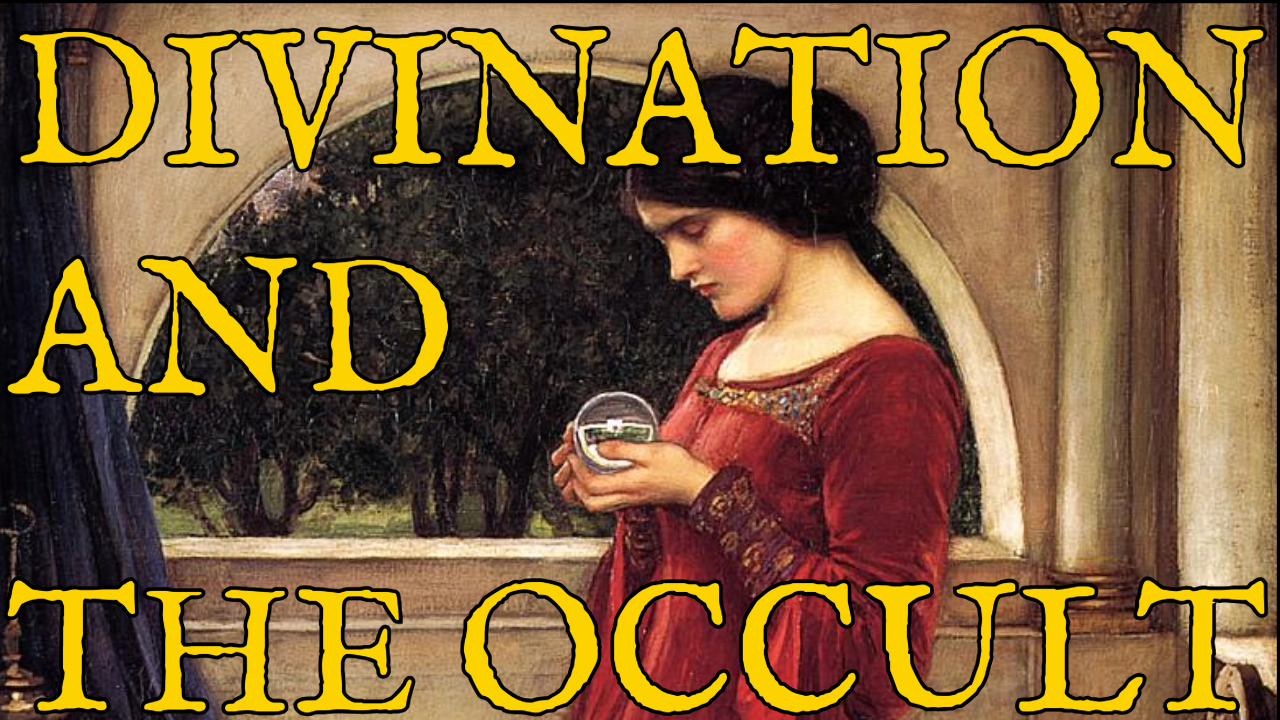
Divination and the occult intersect as both explore hidden or mystical aspects of reality to gain insight, understanding, or influence. Divination focuses on seeking knowledge about possible timelines, hidden truths, or guidance through symbolic tools like tarot cards, astrology, rituals or scrying.
These practices often rely on interpreting subtle energies, archetypes, or otherworldly messages.
Divination fits within the occult as a tool or practice used to tap into these unseen realms, align with universal energies, and bridge the gap between the material and outer worlds. Together, they form a framework for exploring the mysteries of existence and personal transformation.
The Greek word “manteia”, meaning “prophecy/fortune-telling”, will be recurrent in the video for the suffix “mancy”.
Here is a list of 30 Forms of Divination you probably did not know existed:
Abacomancy, also known as Amathomancy, from the Greek “amathos”, “sand”.
A form of divination based on the interpretation of the patterns in dust, dirt, silt, sand or the ashes of the recently deceased. Reading the patterns is believed to give some insight into the future. Readers drop the dirt, sand, or ashes on a flat surface and start looking for a pattern that may represent symbols or pictures. They interpret these symbols and pictures to what is going to happen in the future. Some look for certain symbols that are seen over and over.
Acultomancy from Latin “acūleus”, meaning “needle”, is a form of divination that uses needles for readings.
Readers use 7 or up to 21 needles in a bowl with water in it.
Needles may also be dropped onto a flat surface that has been coated with powder or flour. Readers then look for the designs that the needles make in the substance.
Some of the main designs are lines. They may be broken, parallel, vertical, or horizontal in some fashion. The broken line may mean traveling or heading on a new journey. The parallel lines may mean money in the future, either given or taken away. The vertical lines are meant as guided roads to take. The horizontal lines may mean what the fate will be.
Aeromancy from Greek “aḗr”, “air”, is a form of divination that is conducted by interpreting atmospheric conditions.
Aeromancy uses cloud formations, wind currents and cosmological events such as comets, to attempt to divine the past, present, or future. There are sub-types of this practice which are as follows: austromancy (wind divination), ceraunoscopy (observing thunder and lightning), chaomancy (aerial vision), meteormancy (observing meteors and shooting stars), and nephomancy (cloud divination).
Variations on the concept have been used throughout history and the practice is thought to have been used by the ancient Babylonian priests.
The ancient Etruscans produced divination of the future based upon the omens that were supposedly displayed by thunder or lightning that occurred on particular days of the year, or in particular places.
Divination by clouds was condemned by Moses in Deuteronomy in the Hebrew Bible.
In Renaissance magic, aeromancy was classified as one of the seven “forbidden arts”, along with necromancy, geomancy, hydromancy, pyromancy, chiromancy and spatulamancy.
Aichmomancy, from Greek “aikhmē”, “spearhead”, is a form of divination somewhat similar to acultomancy in that it uses sharp pointed objects to show patterns to read.
Aichmomancy readers use pins, knives, forks, nails and handmade pieces of wood sharpened to a point. Readers drop sharp pointed objects onto a flat surface, find patterns and interpret them.
In the most ancient form of this divination a spearhead was spun in the sand. Several centuries later, during the Early Middle Ages, divination with pins became popular in Europe.
Readers used 7 pins and a table covered with a cloth. Pins were thrown over the table, and the patterns were read and interpreted.
Ailuromancy from Greek aílouros, ‘cat’, also known as felidomancy, is a form of theriomancy. It is divination using cats’ movements or jumps, to predict future events, especially the weather.
For example, if the cat turns its tail to a fire or any heat source, it foretells a possible change in weather, particularly the coming of heavy rain or frost.
Another example is if a cat curls up with its forehead touching the ground, it indicates that storms may happen in the near future.
Alectryomancy comes from the Greek alectryon, “rooster”.
It is a form of divination in which the diviner observes a bird, several birds, or most preferably a white rooster or cockerel pecking at grain (such as wheat) that the diviner has scattered on the ground. The observer may place grain in the shape of letters and thus discern a revelation by noting which letters the birds peck at, or the diviner may just interpret the pattern left by the birds’ pecking in randomly scattered grain.
In another version, the observer puts the bird in the center of a circle, around the perimeter of which is marked the alphabet, with a piece of grain at each letter. For each grain the bird pecks, the observer writes down the letter which that grain represents. The observer also replaces each grain as the bird eats it, so that letters may be repeated. The sequence of letters recorded will presumably contain a message.
Alomancy is an ancient form of divination. From ancient Greek “hals”, “salt”. The diviner casts salt crystals into the air and interprets the patterns as it falls to the ground or travels through the air. The diviner can also interpret patterns that are formed from the residue of a salt solution as it evaporates in a bowl.
One form of alomancy consists of the casting of salt into a fire, which is considered a type of pyromancy.
Alphitomancy from Greek alphiton, ‘barley’, is a form of divination involving barley cakes or loaves of barley bread.
When someone in a group was suspected of a crime, the members of the group would be fed barley cakes or slices of barley bread. Supposedly, the guilty party would get indigestion, while all others would feel well.
Alveromancy is a form of divination that involves interpreting the sounds or patterns made by objects, such as stones, pebbles, or metal, when they are thrown or struck together. It derives from the Greek root “alvero”,referring to sound or noise.
Objects such as pebbles, stones, or metals are cast, struck, or manipulated to produce sounds. The practitioner listens carefully to the sounds, their tone, pitch, rhythm, or the way they resonate. Interpretations are made based on the nature of the sound, its intensity, and any patterns perceived, often with a focus on spiritual or symbolic messages.
The type of sound and its clarity were believed to convey messages from the divine or supernatural realms.
Historically, this method was linked to shamanistic or ritualistic practices, as sound was considered a medium to connect with higher forces.
Anachitis, meaning “stone of necessity” is a stone used to call up spirits from water.
The stone was supposedly used in classical antiquity by the Magi for divination. Its use had fallen out of favor by the Middle Ages.
Anthomancy is a form of divination that involves interpreting the meanings and messages of flowers. It derives from the Greek word “anthos” (flower). This practice was historically used to seek guidance, predict outcomes, or answer specific questions.
Specific flowers are chosen for their symbolic meanings, such as roses for love, lilies for purity, or daisies for innocence.
The shape, color, scent, and arrangement of the flowers are examined. Falling petals or their patterns are often analyzed.
The answers are interpreted based on traditional meanings associated with each flower or their behavior during the ritual.
This practice was popular in ancient Greece and Rome, where flowers were seen as symbols of divine messages.
Anthropomancy from Greek “anthropos”, “man”, is a method of divination using the entrails of dead or dying men or women through sacrifice. As much as it may sound unbelievable to us today, records of this practice are found in Ancient Greece, Rome, Egypt, Africa and South America.
Apantomancy is a form of divination using articles at hand or things that present themselves by chance. The diviner works him/herself into a state of trance until an object or event is perceived and a divination worked out. This form of divination was used in ancient Rome by the augurs.
A branch of apantomancy places special significance on chance meetings of animals. The superstition regarding black cats crossing your path comes from this form of divination.
Aspidomancy from the Greek word “aspis”, meaning “shield”, is a form of divination based on the interpretation of patterns on a shield.
Reading the patterns is believed to give some insight into events. Readers study the shield, looking for a pattern that may represent symbols or pictures. They interpret these symbols and pictures as clues as to what is going to happen in the future.
Aspidomancy can also refer to the method of divination of sitting on a shield and reciting incantations to summon an entity or enter a trance, in order to gain knowledge.
Astragalomancy, also known as cubomancy, is a form of divination that uses dice, specially marked with letters or numbers.
Historically, as with dice games, the “dice” were usually knuckle bones or other small bones of quadrupeds. Marked astragali (talus bones) of sheep and goats are common at Mediterranean and Near Eastern archaeological sites, particularly at funeral and religious locations.
Another branch compared to astragalomancy is pessomancy, a type of divination which uses colored or marked pebbles rather than numbered dice. These pebbles are either thrown out of a bag after shuffling or drawn from the bag at random.
The interpretation of the colors or symbols relate to issues such as health, communication, success and travel.
Axinomancy is an obscure method of divination using an axe, hatchet, or (rarely) a saw. Most methods involve throwing an axe into the ground or swinging it into a tree, and interpreting the direction of the handle or the quivering of the blade.
Another interesting method is heating an axe-head in a fire until it glows, and then interpreting the colors and shapes.
Some sources claim that Psalm 74 in the Bible refers to the use of axinomancy to predict the fall of Jerusalem, although in the text the reference to upright axes is not specifically for divination.
Belomancy is the ancient art of divination by use of arrows. The word is built upon Ancient Greek belos, ’arrow, dart’. Belomancy was practiced by Babylonians, Greeks, Arabs and Scythians.
The arrows were typically marked with occult symbols. Different possible answers to a given question were written and tied to each arrow. For example, 3 arrows would be marked with the phrases, God orders it to me, God forbids it to me, and the third would be blank. The arrow that flew the furthest indicated the answer.
Bibliomancy is the use of books in divination. The use of sacred books (especially specific words and verses) for “magical medicine”, for removing negative entities or for divination is widespread in many parts of the world.
A book that is believed to hold the truth is picked.
It is balanced on its spine and allowed to fall open.
A passage is picked, with the eyes closed.
Among Christians, the Bible is most commonly used, in Islamic cultures the Quran. In the Middle Ages in Europe the use of Virgil’s Aeneid was common. In the classical world the Iliad and Odyssey were used.
Cartomancy, maybe the most famous of this list, is fortune-telling or divination using a deck of cards. It appeared soon after playing cards were introduced into Europe in the 14th century. Practitioners of cartomancy are generally known as cartomancers, card readers, or simply readers.
Cartomancy using standard playing cards was the most popular form of providing fortune-telling card readings in the 18th, 19th, and 20th centuries.
In English-speaking countries, the most common form is tarot card reading.
In the religion of ancient Rome, a haruspex was a person trained to practise a form of divination called Haruspicy, the inspection of the entrails of sacrificed animals, especially the livers of sheep and poultry. Various ancient cultures of the Near East, such as the Babylonians, also read omens with this method.
The Roman concept is directly derived from Etruscan religion, as one of the three branches of the Disciplina Etrusca.
Lampadomancy is a form of divination using an oil lamp or a torch flame.
The diviner reads presages from the movements of the flame. In yet another method, the diviner uses the lamp as a means of “attracting spirits to the flames”, in the hope of consulting them regarding future events.
Lampadomancy was a popular method of divination in ancient Egypt, where diviners would perform it at midday in a darkened room illuminated by a single lamp filled with oasis oil.
Literomancy, from the Latin litero-, ‘letter’ is a form of fortune-telling based on written words, or, in the case of Chinese, characters.
When practicing literomancy, the client puts up a subject, be it a single character or a name. The literomancer then analyzes the subject along with other information that the client supplies to arrive at a divination.
Some literomancers can read the curves and lines of a signature just as a professional handwriting analyst might, but uses instinct and divination techniques rather than applied analysis skills.
Lithomancy is a form of divination by which the future is told using stones or the reflected light from the stones. The practice is most popular in the British Isles.
In one popular method, 13 stones are tossed onto a board and a prediction made based on the pattern in which they fall.
In other methods, the stones are representative of various concepts: fortune, magic, love, news, home life and the astrological planets of Mercury, Venus, Mars, Jupiter, Saturn, the Sun, and the Moon.
Metoposcopy is a form of divination in which the diviner predicts personality, character and destiny based on the pattern of lines on the subject’s forehead. It was in use in the Classical Era and was widespread in the Middle Ages, reaching its zenith in the 16th and 17th centuries.
Metoposcopy was developed by the 16th century Italian polymath Girolamo Cardano, considered to be one of the foremost mathematicians of the Renaissance.
Molybdomancy from Ancient Greek molybdos, ‘lead’, is a technique of divination using molten metal. Typically, molten lead or tin is dropped into water.
The resulting shape is either directly interpreted as an omen for the future, or is rotated over a candlelight to create shadows, whose shapes are then interpreted. For example, a bubbly surface signifying money, a fragile or broken shape misfortune. The shape of the lead before melting can refer to a specific area of one’s life. For example, it can be made resembling a ship for traveling, keys for career advancement and so on.
It can be found as a tradition in various cultures, including Austria, Bosnia and Herzegovina, Bulgaria, Germany, Finland, Estonia, Latvia, Switzerland, the Czech Republic, and Turkey.
Necromancy is the practice of communication with the dead by summoning their spirits as apparitions or visions for the purpose of divination, to foretell future events and discover hidden knowledge.
Necromancy was prevalent throughout antiquity with records of this practice in ancient Egypt, Babylonia, Greece, Etruria, Rome and China.
Rituals could be quite elaborate, involving magic circles, wands, talismans, and incantations. The necromancer might also surround himself with morbid aspects of death, which often included wearing the clothing of the deceased and consuming foods that symbolized lifelessness and decay such as unleavened black bread and unfermented grape juice.
Oneiromancy, from Greek “oneiros”, “dream”, is a form of divination based upon dreams. Plants may also be used to produce or enhance dream-like states of consciousness. Occasionally, the dreamer feels as if they are transported to another time or place, and this is offered as evidence they are in fact providing divine information upon their return.
Throughout Mesopotamian history, dreams were always held to be extremely important for divination and Kings paid close attention to them.
In ancient Egypt as far back as 2000 BCE, they wrote down dreams on papyrus. People with vivid and significant dreams were thought to be blessed and were considered special. Ancient Egyptians believed that dreams were like oracles, bringing messages from the Gods.
Dreams occur throughout the Bible as omens or messages from God.
Onychomancy, from Greek onychos, is an ancient form of divination using fingernails as a “crystal ball” or “scrying mirror” and is considered a subdivision of palmistry.
It consists of gazing at fingernails in bright sunlight and then interpreting the “symbols” that appear on them.
The symbols are read in relation to chakra points, reflexology points or colors associated with planets.
Rhabdomancy is a divination technique which involves the use of a rod, wand, staff, stick, arrow, or the like.
One method of rhabdomancy was setting a number of staffs on the ground and observing where they fell, to divine the direction one should travel, or to find answers to certain questions.
Another type of rhabdomancy is dowsing using a wooden stick, usually forked.
Scrying, also referred to as “seeing” or “peeping,” is a practice rooted in divination and fortune-telling. It involves gazing into an object, hoping to receive significant messages or visions that could offer personal guidance, prophecy, revelation, or inspiration.
Unlike augury, which interprets observable events, or divination, which follows standardized rituals, Scrying’s impressions arise within the medium itself.
Methods of scrying often include self-induced trances using crystal balls, mirrors or even modern technology like smartphones.
What do you think of these 30 Forms of Divination? Did you experience them? Know of any others? Let us know in the comment section, subscribe for more and share the post!!!
Video version here:
30 Forms Of Divination You Did Not Know Existed
Interesting sources, additional info, images, credits, attributions and other points of views here:
Elemental Energy and how to use it, check our course here: https://www.udemy.com/course/elemental-energy-for-success-and-well-being/?referralCode=A680413E03BEAD96E744
Book a Tarot reading here: https://www.suryaholistictarot.com/book-a-reading/
Check our soundtrack here:
https://lennyblandino.bandcamp.com/track/fire-meditation-1
Websites:
https://www.staciebronson.com/
https://www.facebook.com/groups/1372429986896515
Links and References:
https://en.wikipedia.org/wiki/List_of_occult_terms
https://en.wikipedia.org/wiki/Abacomancy
https://en.wikipedia.org/wiki/Abracadabra
https://en.wikipedia.org/wiki/Acultomancy
https://en.wikipedia.org/wiki/Aeromancy
https://en.wikipedia.org/wiki/Aichmomancy
https://en.wikipedia.org/wiki/Ailuromancy
https://en.wikipedia.org/wiki/Alectryomancy
https://en.wikipedia.org/wiki/Alomancy
https://en.wikipedia.org/wiki/Alphitomancy
https://en.wikipedia.org/wiki/Anachitis
https://en.wikipedia.org/wiki/Anthropomancy
https://en.wikipedia.org/wiki/Apantomancy
https://en.wikipedia.org/wiki/Aspidomancy
https://en.wikipedia.org/wiki/Astragalomancy
https://en.wikipedia.org/wiki/Axinomancy
https://en.wikipedia.org/wiki/Belomancy
https://en.wikipedia.org/wiki/Bibliomancy
https://en.wikipedia.org/wiki/Cartomancy
https://en.wikipedia.org/wiki/Haruspex
https://en.wikipedia.org/wiki/Lampadomancy
https://en.wikipedia.org/wiki/Literomancy
https://en.wikipedia.org/wiki/Lithomancy
https://en.wikipedia.org/wiki/Metoposcopy
https://en.wikipedia.org/wiki/Molybdomancy
https://en.wikipedia.org/wiki/Necromancy
https://en.wikipedia.org/wiki/Oneiromancy
https://en.wikipedia.org/wiki/Onychomancy
https://en.wikipedia.org/wiki/Rhabdomancy
https://en.wikipedia.org/wiki/Scrying
Pics:
https://en.wikipedia.org/wiki/Abracadabra#/media/File:Abracadabra_triangle_(cropped).jpg
https://en.wikipedia.org/wiki/Adept#/media/File:The_Immortal_Soul_of_the_Taoist_Adept.PNG
https://en.wikipedia.org/wiki/Aeromancy#/media/File:Shelfcloud.jpg
https://en.wikipedia.org/wiki/Ailuromancy#/media/File:Calico_Cat_Asleep.jpg
https://en.wikipedia.org/wiki/Alomancy#/media/File:SeaSalt.JPG
https://commons.wikimedia.org/wiki/File:Bronze_votive_shield.JPG
https://commons.wikimedia.org/wiki/File:Sad_Axe.jpg
https://commons.wikimedia.org/wiki/File:Rembrandt%27s_Mother_-_Rembrandt_Harmenszoon_van_Rijn.png
https://en.wikipedia.org/wiki/Cartomancy#/media/File:Michail_Alexandrowitsch_Wrubel_001.jpg
https://en.wikipedia.org/wiki/Lampadomancy#/media/File:BrassOliveOilLamp2.jpg
https://commons.wikimedia.org/wiki/File:Stones_Porto_DSCF0572.jpg
https://en.wikipedia.org/wiki/Molybdomancy#/media/File:Bleigiessen-Vorgang.jpg
https://en.wikipedia.org/wiki/Necromancy#/media/File:Endor.jpg
https://en.wikipedia.org/wiki/Onychomancy#/media/File:Onychomancy_finger_chart.png
https://en.wikipedia.org/wiki/Arrow#/media/File:Two_arrows.jpg
https://en.wikipedia.org/wiki/Scrying#/media/File:John_William_Waterhouse_-_The_Crystal_Ball.JPG
https://pixabay.com/photos/beach-sand-dunes-landscape-7153932
https://pixabay.com/photos/sewing-thimble-pins-safety-pins-661992
https://pixabay.com/photos/cutlery-forks-knives-restaurant-2464197
https://pixabay.com/photos/cat-kitten-feline-pussy-cloud-5098930
https://pixabay.com/photos/rooster-hens-chickens-birds-7056152
https://pixabay.com/photos/bread-loaf-artisan-artisan-bread-1510155
https://pixabay.com/photos/balls-metal-iron-texture-grooves-2165742
https://pixabay.com/photos/throw-stone-colorful-night-summer-6781567
https://pixabay.com/photos/light-ghi-lamp-dark-bokeh-night-1097599
https://pixabay.com/photos/cat-black-cat-outdoors-sit-sitting-2939726
https://pixabay.com/photos/sheep-meadow-white-farm-5352474
https://pixabay.com/photos/forest-stick-pile-wood-twigs-4882105
